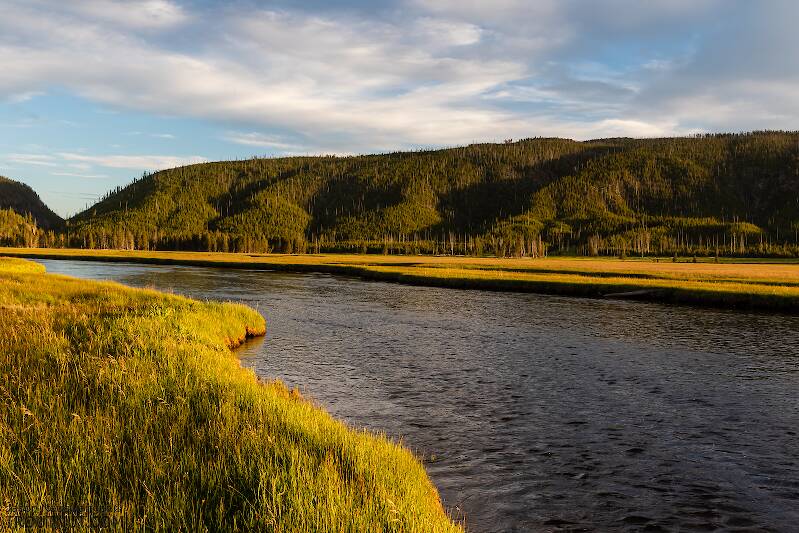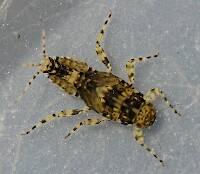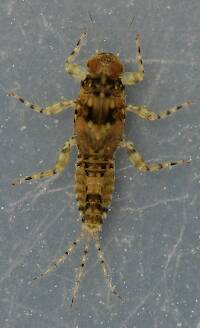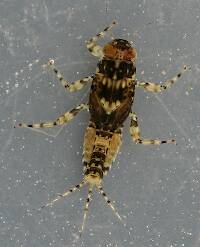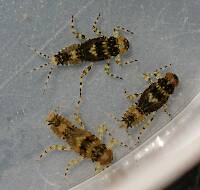
Blue-winged Olives
Baetis
Tiny Baetis mayflies are perhaps the most commonly encountered and imitated by anglers on all American trout streams due to their great abundance, widespread distribution, and trout-friendly emergence habits.
Featured on the forum

Troutnut is a project started in 2003 by salmonid ecologist Jason "Troutnut" Neuswanger to help anglers and
fly tyers unabashedly embrace the entomological side of the sport. Learn more about Troutnut or
support the project for an enhanced experience here.
Taxon on Aug 29, 2013August 29th, 2013, 7:33 am EDT
Hi Louis-
This is the information contained in my N. American Mayfly Species Query
for Serratella serrata.
Family name: Ephemerellidae
Scientific name: Serratella serrata
Previously know as: Ephemerella carolina, Ephemerella serrata, Ephemerella sordida, Ephemerella spiculosa, Serratella carolina, Serratella sordida, Serratella spiculosa
Common name: Dark Iron Blue Quill, Little Dark Hendrickson, Olive Quill
Locality: E, M
CAN Regions: NE,NW
MEX Regions:
USA Regions: NE,SE
Cent. Amer. Countries:
CAN Provinces: *1:NB, NS, ON, QC. *4:SK *8: *99:
MEX States: *1:*99:
USA States: *1:AL, AR, CT, IN, MA, MD, ME, MI, MN, NC, NY, OH, PA, SC, TN, VA, WI, WV. *2: *3: *5:NC *6:PA *7: *99: NC,NY,PA,TN
Habitat:
Voltinism:
Emergence (begin) date: Jun
Emergence (end) date: Jul
Emergence time of day: morning
Spinner fall time of day:
Nymph minimum length: 5 mm.
Nymph maximum length: 6 mm.
Nymph identification keys: teeth on tarsal claw (3-5), abdominal spines (small, round), thoracic tubercles (present)
Nymph body description: dark brown w/pale cream stripe along entire body length
Nymph legs:
Nymph gills: oval
Nymph tusks:
Nymph tails: 3,
Dun minimum length: 5 mm.
Dun maximum length: 5 mm.
Dun identification keys:
Dun body description: dark brown
Dun wings: dark gray
Dun legs: tannish cream
Dun tails: 3, pale cream
Spinner minimum length: 5 mm.
Spinner maximum length: 5 mm.
Spinner identification keys: ventral abdominal marks present, (male) penes broadened at base as much as or more than at apex; male claspers w/2 joints
Spinner body description: thorax dark brown, abdomen brown
Spinner wings: fore wing with detached intercalary veins, hind wing w/costal angulation
Spinner legs:
Spinner tails: 3,
Region distribution/taxonomy are based on Mayfly Central's N.A. Species List and C.A. Species List.
State/Province distribution is based on:
*1: Distribution of mayfly species of North America, by R. P. Randolph, supplemented by
Mayflies (Ephemeroptera) of the far western United States by M. D. Meyer & W. P. McCafferty
(*2: Part I: Washington), supplemented by
(*3: Part II: Oregon), supplemented by
*4: The Mayflies Of Saskatchewan by J. M. Webb, supplemented by
*5: The Ephemeroptera Of North Carolina by S. R. Beaty, supplemented by
*6: Pennsylvania Mayflies by Greg Hoover, supplemented by
*7: Insecta, Ephemeroptera: New Alabama state records by McCafferty & Webb, supplemented by
*8: Insecta, Ephemeroptera: New records for Ontario by McCafferty, Jacobus, Webb, and Meyer, supplemented by
*99: A DNA Barcode Library for North American Ephemeroptera: etc. by Webb, Jacobus, Funk, et. al.
This is the information contained in my N. American Mayfly Species Query
for Serratella serrata.
Family name: Ephemerellidae
Scientific name: Serratella serrata
Previously know as: Ephemerella carolina, Ephemerella serrata, Ephemerella sordida, Ephemerella spiculosa, Serratella carolina, Serratella sordida, Serratella spiculosa
Common name: Dark Iron Blue Quill, Little Dark Hendrickson, Olive Quill
Locality: E, M
CAN Regions: NE,NW
MEX Regions:
USA Regions: NE,SE
Cent. Amer. Countries:
CAN Provinces: *1:NB, NS, ON, QC. *4:SK *8: *99:
MEX States: *1:*99:
USA States: *1:AL, AR, CT, IN, MA, MD, ME, MI, MN, NC, NY, OH, PA, SC, TN, VA, WI, WV. *2: *3: *5:NC *6:PA *7: *99: NC,NY,PA,TN
Habitat:
Voltinism:
Emergence (begin) date: Jun
Emergence (end) date: Jul
Emergence time of day: morning
Spinner fall time of day:
Nymph minimum length: 5 mm.
Nymph maximum length: 6 mm.
Nymph identification keys: teeth on tarsal claw (3-5), abdominal spines (small, round), thoracic tubercles (present)
Nymph body description: dark brown w/pale cream stripe along entire body length
Nymph legs:
Nymph gills: oval
Nymph tusks:
Nymph tails: 3,
Dun minimum length: 5 mm.
Dun maximum length: 5 mm.
Dun identification keys:
Dun body description: dark brown
Dun wings: dark gray
Dun legs: tannish cream
Dun tails: 3, pale cream
Spinner minimum length: 5 mm.
Spinner maximum length: 5 mm.
Spinner identification keys: ventral abdominal marks present, (male) penes broadened at base as much as or more than at apex; male claspers w/2 joints
Spinner body description: thorax dark brown, abdomen brown
Spinner wings: fore wing with detached intercalary veins, hind wing w/costal angulation
Spinner legs:
Spinner tails: 3,
Region distribution/taxonomy are based on Mayfly Central's N.A. Species List and C.A. Species List.
State/Province distribution is based on:
*1: Distribution of mayfly species of North America, by R. P. Randolph, supplemented by
Mayflies (Ephemeroptera) of the far western United States by M. D. Meyer & W. P. McCafferty
(*2: Part I: Washington), supplemented by
(*3: Part II: Oregon), supplemented by
*4: The Mayflies Of Saskatchewan by J. M. Webb, supplemented by
*5: The Ephemeroptera Of North Carolina by S. R. Beaty, supplemented by
*6: Pennsylvania Mayflies by Greg Hoover, supplemented by
*7: Insecta, Ephemeroptera: New Alabama state records by McCafferty & Webb, supplemented by
*8: Insecta, Ephemeroptera: New records for Ontario by McCafferty, Jacobus, Webb, and Meyer, supplemented by
*99: A DNA Barcode Library for North American Ephemeroptera: etc. by Webb, Jacobus, Funk, et. al.
Entoman on Aug 29, 2013August 29th, 2013, 8:48 am EDT
According to Allen & Edmunds '63, both species are well distributed along the Appalachian corridor from the carolinas up into Northern Canada. As one would expect, emergence occurs later the further North you go. In the NE, a time frame of July to late August is given, depending on the year and location. Curiously, this older paper reverses the size description, showing serrata (sordida) as the smaller critter. The good news is it is consistent with other papers that list tail annulations as a diagnostic character and have it listed in its key.
"It's not that I find fishing so important, it's just that I find all other endeavors of Man equally unimportant... And not nearly as much fun!" Robert Traver, Anatomy of a Fisherman
Entoman on Aug 29, 2013August 29th, 2013, 9:09 am EDT
I have fairly extensive experience with the virtually identical Serratella tibialis (Little Dk. Red Quill) out in my neck of the woods. Tibialis has since been relisted in the Ephemerella genus, but no matter. Still a dark little Summer ephemerellid, whatever scientists choose to call it. It is fairly common on some mountain streams and is probably the most important Summer mayfly we have on those lacking tricos and where the PMD's have long since finished. Unlike the Summer heptageniids that usually seem to trickle off, these hatches are more concentrated and they can come off in pretty good numbers. Pain in the butt to fish as they are usually very difficult to make out on sparkly Summer riffles and don't seem to show up in the evening air all that well, either. A lot of anglers miss them and assume the feeding fish are working caddis (that are always about) or terrestrials in the film. This is one hatch where the fish definitely seem to prefer flies with dark wings that match the natural. I rarely get away with bright sighter posts. It was much easier to fish them when I had younger eyes. :)
"It's not that I find fishing so important, it's just that I find all other endeavors of Man equally unimportant... And not nearly as much fun!" Robert Traver, Anatomy of a Fisherman
Martinlf on Aug 29, 2013August 29th, 2013, 3:20 pm EDT
Yes, the fish also can be a bit picky about the wing color with Teloganopsis, at least on one pressured stream I fish. I've tied parachutes with colored posts then with a black marker darkened the lower portions, leaving just a bright tip, for those iron grey days when glare seems everywhere. Sometimes a solid black post or black burned wings will show up well enough, depending on the light.
"He spread them a yard and a half. 'And every one that got away is this big.'"
--Fred Chappell
--Fred Chappell
Crepuscular on Sep 13, 2013September 13th, 2013, 4:34 am EDT
Tails are not banded on the one I posted
Jmd123 on Sep 13, 2013September 13th, 2013, 4:57 pm EDT
"I just got back from the great white north. WOW 6 weeks in the bush."
Welcome back Mack! Sooooo...PHOTOS??
Funny thing, this here website got a little quiet for a while, so I started posting some of my local trips (especially with the wildflowers in full bloom). That seemed to have gotten the ball rolling, now we're getting some fresh trip reports replete with wonderful photos. Of course, we always know we can count on Spence for that... ;oD
So Mack, I know you got' em, post your latest adventures like the rest of us!
Jonathon
Welcome back Mack! Sooooo...PHOTOS??
Funny thing, this here website got a little quiet for a while, so I started posting some of my local trips (especially with the wildflowers in full bloom). That seemed to have gotten the ball rolling, now we're getting some fresh trip reports replete with wonderful photos. Of course, we always know we can count on Spence for that... ;oD
So Mack, I know you got' em, post your latest adventures like the rest of us!
Jonathon
No matter how big the one you just caught is, there's always a bigger one out there somewhere...
Jmd123 on Sep 13, 2013September 13th, 2013, 8:15 pm EDT
Mack, good for you! That sounds like a great time, I imagine your son is loving it too. Yeah, check out some of my latest posts, got caught up in June and July in a butterfly habitat survey project in the Manistee National Forest, have been making up for it with fishing in August and September...
Do post some pics, I would love to see you and your son at work in the wild.
Jonathon
Do post some pics, I would love to see you and your son at work in the wild.
Jonathon
No matter how big the one you just caught is, there's always a bigger one out there somewhere...
Quick Reply
Related Discussions
Topic
Replies
Last Reply
4
Dec 22, 2009
by Oldredbarn
by Oldredbarn
3
Jan 16, 2007
by Martinlf
by Martinlf
16
Sep 22, 2011
by Oldredbarn
by Oldredbarn

